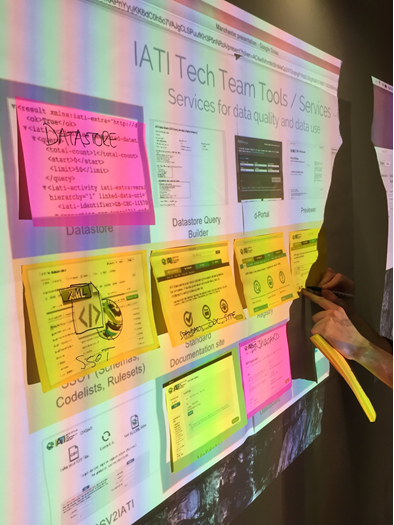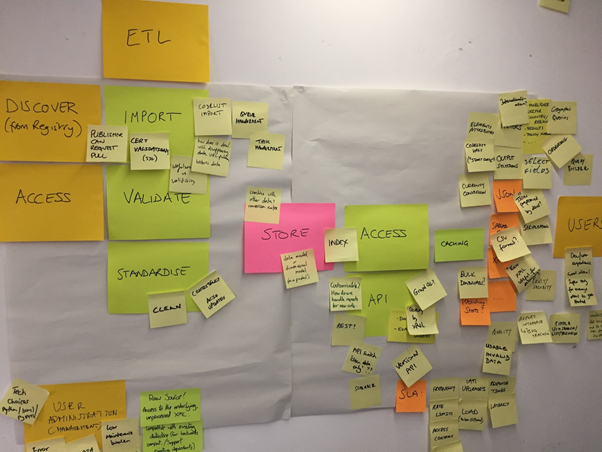IATI Developers’ Workshop – what we achieved
This post has been written by Bill Anderson, IATI Technical Lead and John Adams at the UK Department for International Development and Chair of IATI’s Technical Advisory Group (TAG) on IATI’s Developers’ Workshop (Manchester, 22-23 January 2018).
In Manchester’s super-cool Northern Quarter, fuelled with good coffee and a big bag of Post-Its and Sharpies, 19 members of the IATI TAG community who are based in Europe gathered on the top floor of Madlab to investigate how we could build consensus and collaborate together to make IATI stronger.

Panorama courtesy @siemvaessen CC by 4.0
The workshop covered two themes:
Working together
Following overview presentations from the IATI Technical Team, we held a retrospective working out of how we could work better together. This was a really useful exercise that showed that we are still passionate about IATI, inspired by the community and motivated by the potential.
A lot of things work well about IATI, particularly the TAG, the standard itself and the support from a wide range of organisations. The areas where we could do better include data quality, communication, data infrastructure, understanding user needs and better planning.

Photo courtesy @rbesseling
Technical tools to support data use
We built a map of the existing IATI technical tools, starting with the 15+ tools managed by IATI’s Tech Team. We built a consensus on those tools that are core, support the standard, are useful to the development of the standard or are non-core (see below).
We agreed that the Datastore is a key element in the future IATI infrastructure, and that it should focus on delivering IATI data in different formats that people can use to build information products.

We mapped out high-level capability that a Datastore could do, adding further detail and discussing relative priorities. I was delighted that we achieved consensus on the core features that a Datastore needs.

Photo courtesy @rbesseling
We also agreed that while the Datastore is a core tool it doesn’t necessarily need to be built and developed by the IATI Tech Team, but that it could be delivered by others within the TAG community. We recognise that there are potential candidates already available, and we are working through different approaches to how this could be achieved.
Finally, we built a model for validation that helped us to understand the different dimensions to validation. These probably need an additional blog post!
What we achieved
Bill has summarised what we achieved:
1) My existential answer is … Common cause; common language; common ways of looking at problems; common approaches to solving problems. Open source doesn’t mean single source. Common solutions don’t mean code hegemony.
2) My community answer is … A better understanding of the responsibilities of the IATI Tech Team. A better understanding of mutual support. A joint approach to improving validation. Consensus on how to approach an IATI Datastore solution
3) My practical answer is … Commitments to help the Technical Team with content and user testing on the new IATI website. Joint work on validation. A working group to advise on governance, functionality and oversight of a new datastore.
What next?
We want to widen the conversation to the rest of the community. We couldn’t include every IATI developer in this initial meeting, either due to geography or to work commitments elsewhere.
We will endeavour to get all the material online, and I would like to hear your ideas for how to include developers from other continents.
We finish by saying a big thank you to everyone who devoted two days to building a stronger IATI community.